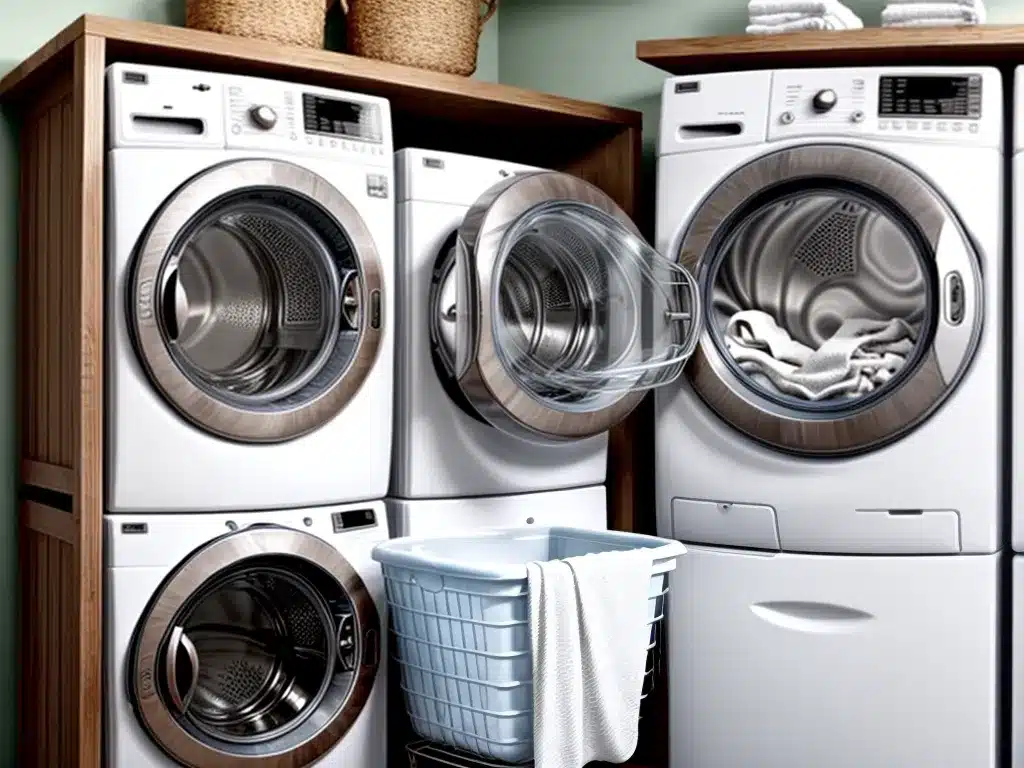Switching to an eco-friendly laundry routine is one of the easiest ways to reduce your environmental impact. With a few simple changes, you can have clean clothes while being kind to the planet. Here is my comprehensive guide to creating the best sustainable laundry routine.
Choosing Detergent
The first step is to find an environmentally-friendly detergent. Here are some things to look for:
-
Plant-based ingredients: Choose detergents made from renewable materials like coconut oil, corn, or other plants. These break down easier.
-
Biodegradable formula: Make sure the label says it is biodegradable, meaning it won’t persist in the environment.
-
No phosphates: Phosphates provide cleaning power but damage waterways. Opt for phosphate-free.
-
Unscented: Fragrances are often derived from petrochemicals. Go for fragrance-free.
-
Concentrated formula: Concentrates use less packaging overall. Or even better, buy in bulk.
-
Eco-friendly certifications: Look for Safer Choice, EWG Verified, or other third-party certifications.
Some great eco-friendly detergent brands are Seventh Generation, ECOS, and Molly’s Suds.
Washing in Cold Water
Washing your clothes in cold water instead of hot is better for the environment in two key ways:
-
It reduces the energy used to heat the water, which lowers your carbon footprint.
-
It helps clothes retain their colors and fabrics last longer, generating less textile waste.
Modern detergents are formulated to work well in cold water. While warm or hot water can help remove tough stains, washing in cold is sufficient for most loads.
Maximizing Full Loads
Run your washing machine only when you have full loads. This simple step reduces water and energy use. Aim for 4-6 pounds of laundry per load.
Split loads into:
- Whites
- Lights
- Darks
- Towels
- Delicates
This helps clothes come out cleaner and less faded. If you end up with smaller loads, adjust the water level accordingly.
Choosing an Eco-Friendly Dryer
Line drying clothes outdoors is the most environmentally-friendly option. But when line drying isn’t possible, here are sustainable dryer choices:
-
Heat pump dryer: Uses less energy than a traditional dryer by recirculating heat.
-
Ventless condenser dryer: Doesn’t require external venting and uses a closed-loop system.
-
Gas dryer: More energy-efficient than electric dryers if you have access to natural gas.
No matter what type you use, run full loads, clean the lint filter, and dry similar fabrics together. And skip the dryer sheets – they contain harmful chemicals and fragrances.
Removing Stains Naturally
For tough stains, try these non-toxic pre-treatments:
-
Baking soda – Sprinkle on grease and oil stains.
-
White vinegar – Apply to sweat stains before washing.
-
Lemon juice – Rub on rust stains and let sit.
-
Salt – Make a paste with water for wine or blood stains.
-
Hydrogen peroxide – Lightly blot on perspiration stains.
Spot test first and never mix chemical cleaning products. With some elbow grease, these homemade solutions lift stains safely.
Switching to Wool Dryer Balls
Instead of dryer sheets, use wool dryer balls. These reusable balls separate clothes, allowing airflow to reduce drying time. Other benefits:
- Help reduce wrinkles and static cling naturally
- Soften fabrics without chemicals
- Last for hundreds of washes
Wool dryer balls are available online and in many stores. To use, simply toss a few into the dryer with your laundry. A set of 3-6 should work for most loads.
Final Thoughts
Making more eco-friendly laundry choices benefits the planet while still leaving you with fresh, clean clothes. By being mindful of detergent, water use, drying, and stain removal, we can collectively reduce the impact of doing laundry. With a few easy habits, our laundering can be gentler on the earth.







